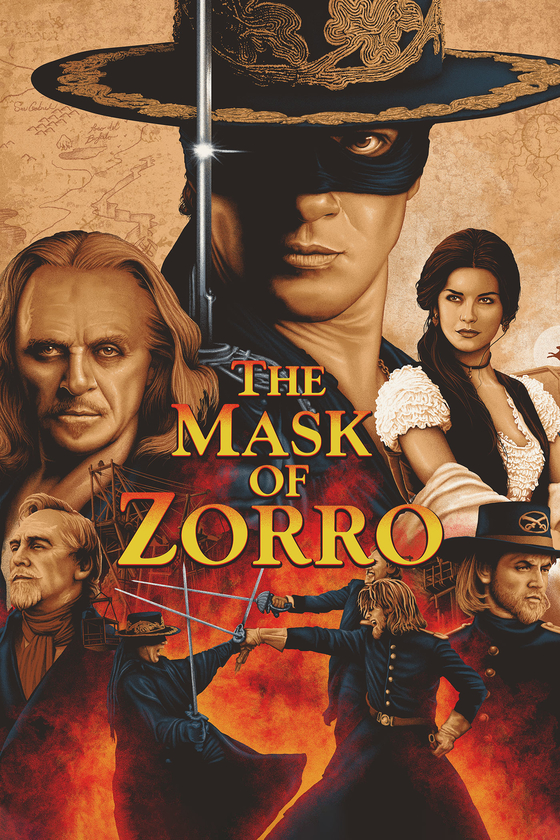Adventure Is Out There!
Adventure films are one of the highest-grossing genres in the world. With 63.57 billion dollars in total box revenue (1995-2020), adventure movies are the most popular movie genre in North America. The popularity of these films originally arose in the 1940s with movies such as
Captain Blood and The
Adventures of Robinhood, as since then many subgenres were created, one of them being "swashbuckler", in other words, adventure films characterized by sword fighting.
Content:
Adventure films are distinguished by the protagonist's journey and pursuit of the unknown. Facing obstacles and barriers, the protagonists have to overcome their challenges in order to reach their end goal. Commonly throughout adventure films, the protagonists tend to be successful in their escapades by the time the conclusion arrives. These films take place in exotic locations or those that add history to the plot, but no matter what the setting is, it always plays a large factor in the movie. Violence in these films, if there are any, are usually less graphic as compared to other movie genres as they tend to insinuate violence rather than specifically showing it.
Example: In the movie
Up , the protagonists travel a great distance through various exotic settings in order to arrive at "Paradise Falls" which was the protagonist's main motivation throughout the film.
Production Tecnhiques:
As said before, the setting in an adventure movie plays a large role in the overall finished piece. It is arguable as important, if not more, as the characters themselves. Because of its importance, along with the fact that as the protag's journey goes on the setting changes, most adventure films utilize establishing shots in order for the viewers to easily understand where the scene takes place.
Example: This establishing shot from
Harry Potter and the Philosopher's Stone is used to mark a new chapter in the protagonist's story, indicating that the following scenes in the movie will take place at the school.
Scores are also commonly seen throughout adventure films. Scores aid in evoking the specific emotion directors of a film want the audience to experience. During high action scenes, there will be music that increases the adrenaline, during intense scenes music may aid in increasing an anxious feeling. Scores also make the audience relate a specific song to a film, which many times evoke the feeling of nostalgia for those rewatching.
Example: The score for
Jurrasic Park became popular after the film's success. This resulted in the Jurrasic Park theme being universally known by many.
Adventure movies most commonly have an uncontrolled mis-en-sence, as production usually strives for a realistic view of a protagonist in a journey. Other techniques used for realism in adventure movies are seen in other genres such as sound effects, natural lighting, environmental sounds, etc.
Marketing:
Adventure films have a large demographic. Originally, the target audience would be men but as the years went by this expanded. Because of its lack of graphic violence, adventure films have a wide viewing audience, including men, women, and children. Like other genres, these movies are mostly marketed through trailers and posters. Trailers tend to include some establishing shots along with shots of the protagonists in action. Posters tend to feature the main protagonists in a collage style.
Samples:

The film
Pirates of the Caribbean: The Curse of the Black Pearl (2003) is the first film of the Pirates of the Caribbean series. This film is one of the examples that fall under swashbuckler in the adventure genre as throughout the movie it highlights several sword-fighting scenes between pirates and sailors alike. POTC features young Will Turner, played by
Orlando Bloom, on a quest to save the woman he's in love with, Elizabeth Swann (
Keira Knightley) who was been kidnapped by pirates. With the help of Captain Jack Sparrow (
Johny Depp), Turner is able to help Swann escape, as arguably Elizabeth did a lot of the saving herself, while also breaking a curse of the Black Pearl, which was a large aspect of their journey. With the popularity of this film, the score became iconic throughout the media, specifically,
He's a Pirate Suite, which is now known as the theme for POTC. This song was commonly used during thrilling scenes which creates excitement and boosts adrenaline. As seen above, the poster follows the common poster theme for adventure movies with the collage-like design.
.jpg)
The film
Lord of the Rings: The Fellowship of the Ring (2001) is also the first film of the series based off of the first novel. In it, we follow the journey of Frodo Baggins (
Elijah Wood) and friends, such as Gandalf (
Ivan McKellen), Legolas (
Orlando Bloom), Aragorn (
Viggo Mortensen), and Sam (
Sean Astin) on the quest of destroying a ring powered with evil. Though in this first movie the protagonists didn't finish the quest as of yet, it did conclude in a lighter and happier tone compared to the rest of the movie. Like POTC, LOTR also has a score, which was produced by
Howard Shore, which also became well known in the film industry. The film focused a lot on realism despite its supernatural content by location filming and relying on natural lighting. Sound effects were also used to enhance moments in the film such as steps on the ground when running and the sound of an arrow flying past. The poster also fits the adventure theme with a collage-type design.
Other Adventure Films:




.jpg)




